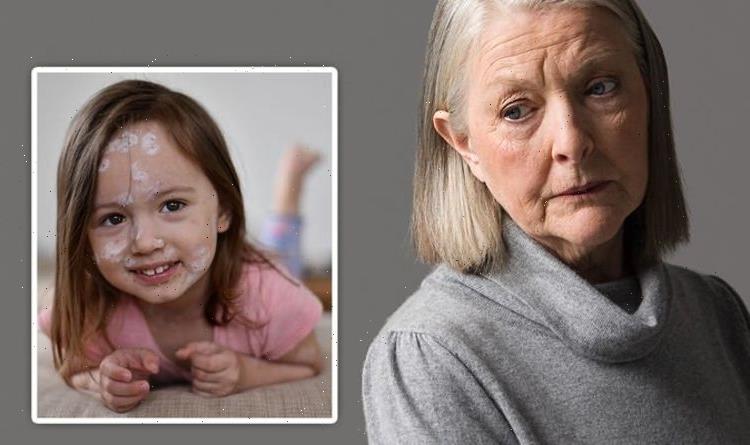Loose Women: Eamonn Holmes discusses his issues with shingles
We use your sign-up to provide content in ways you’ve consented to and to improve our understanding of you. This may include adverts from us and 3rd parties based on our understanding. You can unsubscribe at any time. More info
Most people have had chickenpox in their childhood, but did you know that afterwards the virus can remain dormant in the nerve tissue near the spinal cord and brain. Years later, the Mayo Clinic confirmed, the virus might be reactivated, leading to shingles. Experts at the NHS highlighted the very “first signs” of shingles.
One symptom of the infection is a “tingling or painful feeling in an area of skin”.
Another warning sign is a “headache or feeling generally unwell”.
A painful rash will develop a few days later, most commonly found on the chest and stomach.
The rash will appear “as blotches on your skin”, on one side of your body only.

With time, the blotches may become itchy blisters that ooze fluid.
“Get advice from 111 as soon as possible if you think you have it,” the NHS instructed.
Medication might be needed to speed up the recovery process and to avoid longer-lasting issues.
It is critical to get treated within three days of symptom onset.

While shingles can not be passed onto others, you could pass on the chickenpox virus to those who haven’t had the condition.
You are advised to stay away from pregnant women who have not had chickenpox, people with weakened immune systems, and babies less than four weeks old (unless you gave birth to the baby).
If you do not get medical advice as soon as possible, shingles can lead to postherpetic neuralgia, the Mayo Clinic pointed out.
This leads to shingle pain for a long time after the blisters have cleared.
The Mayo Clinic warned: “Anyone who’s had chickenpox may develop shingles.”
Risk factors for the occurrence of shingles include:
- Being older than 50
- Having a weakened immune system
- Undergoing cancer treatments
- Taking steroids for a prolonged period of time.
Shingles is a serious condition that may even lead to vision loss.
The reactivated virus may also lead to inflammation of the brain, facial paralysis, and hearing issues.

While medical staff are likely to prescribe antiviral medication, there are other things you can do to ease painful symptoms.
For instance, taking a cool bath can help to ease soreness.
Furthermore, a wet compress on the blisters may help to relieve itching and pain.
To help prevent the condition from worsening, try to reduce the amount of stress in your life.
Source: Read Full Article
